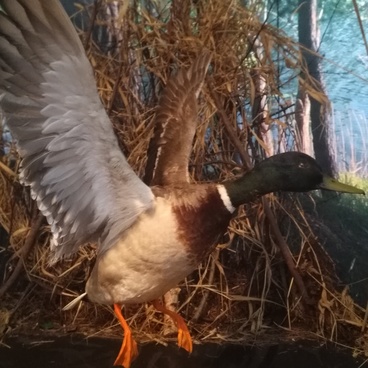A Kornevatik is an invention of a northern civilization: it’s a wicker container usually made of cedar roots and bird cherry rods. It was widely used in everyday life by the Khanty and the Mansi — the small aboriginal peoples that live in the north of Western Siberia.
Kornevatiks were suitable for storing different objects such as household utensils, food or even ammunition. The Explanatory Dictionary of the Live Great Russian Language by Vladimir Dahl has a definition of this word: “a kornevatik (masculine) or kornevatka (feminine) is a wicker basket made of roots and rods”.
To make a kornevatik one needs to prepare the so-called sarga — “thin lath, rods and roots for weaving and knitting”. For that, it is necessary to split cedar roots into 4 parts and then tear several thin layers from the outer side of the wood. These strips must be cleared of slivers and divided to thinner layers if required.
A kornevatik is made by braiding cedar strips around bird cherry rods. The working strip is dragged through the slit made by an awl in the previous winded coil. Then the braiding must be tightened well so that the container remains tight after it dries.
A kornevatik usually has a round or a rectangular shape: it depends on the shape of the initial rod’s framework. The cap is made separately and tied to the container with rawhide leather straps. Similar straps are used to make a holder for carrying.
Weaving a kornevatik is a very hard work, it demands a lot of physical strength that is why it was traditionally performed by men.
Kornevatiks protected the contents from damp and damage thanks to the excellent hygroscopic properties of the material, tight weaving and a good-matching cap. They were particularly suitable to be carried and used during trips.
By the end of the 20th century this item lost its household use and the craft gradually die out. Nowadays there are very few masters left and kornevatiks are mostly made for souvenir gifts.
Kornevatiks were suitable for storing different objects such as household utensils, food or even ammunition. The Explanatory Dictionary of the Live Great Russian Language by Vladimir Dahl has a definition of this word: “a kornevatik (masculine) or kornevatka (feminine) is a wicker basket made of roots and rods”.
To make a kornevatik one needs to prepare the so-called sarga — “thin lath, rods and roots for weaving and knitting”. For that, it is necessary to split cedar roots into 4 parts and then tear several thin layers from the outer side of the wood. These strips must be cleared of slivers and divided to thinner layers if required.
Then the sarga is rolled up in circlets, dried up and preserved until needed. Earlier the cedar sarga was also used for weaving ropes.
A kornevatik is made by braiding cedar strips around bird cherry rods. The working strip is dragged through the slit made by an awl in the previous winded coil. Then the braiding must be tightened well so that the container remains tight after it dries.
A kornevatik usually has a round or a rectangular shape: it depends on the shape of the initial rod’s framework. The cap is made separately and tied to the container with rawhide leather straps. Similar straps are used to make a holder for carrying.
Weaving a kornevatik is a very hard work, it demands a lot of physical strength that is why it was traditionally performed by men.
Kornevatiks protected the contents from damp and damage thanks to the excellent hygroscopic properties of the material, tight weaving and a good-matching cap. They were particularly suitable to be carried and used during trips.
By the end of the 20th century this item lost its household use and the craft gradually die out. Nowadays there are very few masters left and kornevatiks are mostly made for souvenir gifts.

